- Know about and see lovely pictures of
the Jewellery, Headgear, and Dress traditions of the Brokpa community of
Ladakh.
Unveiling the enigmatic Aryaan tribe of Ladakh-often referred to as the “lost tribe”-residing in the captivating landscapes of Dah, Batalik.
They are nestled approximately 130
kilometers northeast of Kargil, along the Line of Control, where lie a cluster
of villages including Dah, Hano (comprising Hano Goma and Hano Yogma), Darchik,
and Garkon. These settlements, positioned on the northern bank of the Indus en
route to Baltistan, have been bastions of isolation for this distinctive
community over countless centuries.
This tribe possesses remarkable physical
attributes, characterized by their towering stature, green eyes, high
cheekbones, fair complexion, and occasional instances of blonde hair. They proudly identify
themselves as the pure descendants of the Aryans, a lineage preserved through
generations. Intriguingly, their ancestry is entwined with a fascinating
historical narrative-the claim of direct descent from Alexander’s Army.
According to local lore, some members of Alexander’s expeditionary force chose to remain in this secluded region when the conqueror halted his campaign along the banks of the Indus in 326 BC. The enduring legacy of the Aryaan tribe, thus, bears witness to an ancient connection with one of history’s most renowned military endeavors.
Captured in the lens in the village of
Garkon, these photographs offer glimpses into the mystique and resilience of
the Aryaan community, prompting reflections on the historical scenes woven into
the fabric of their isolated existence.
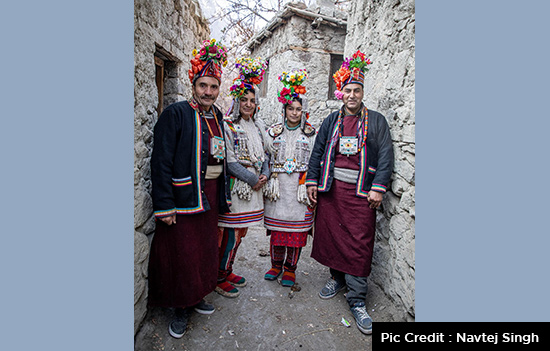
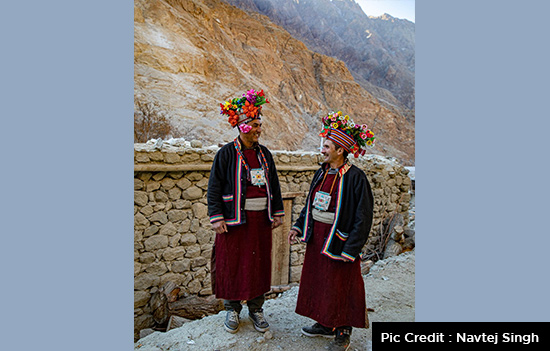
Jewellery
The Brokpa community in Ladakh showcases
their cultural identity through unique jewelry. Adorned with shells, coins,
threads, animal fur, and heirloom silver pieces, these ornaments are exclusive
to the community, passed down through generations. Each piece carries profound
sentimental value, contributing to the preservation of their 5000-year-old
heritage.
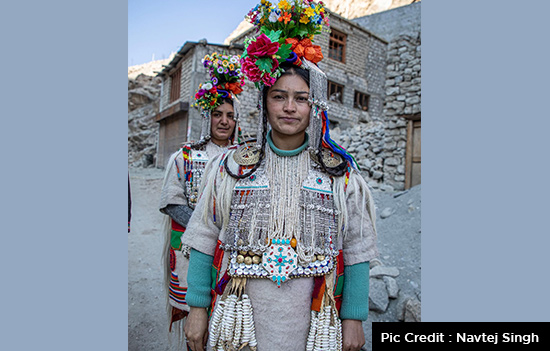
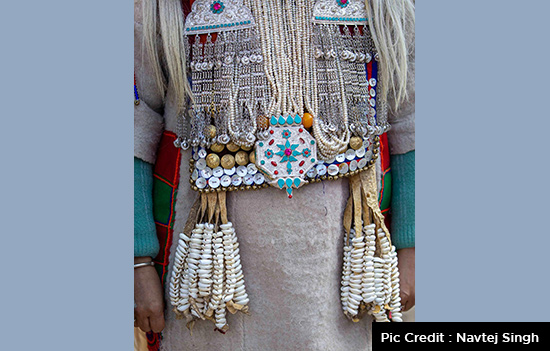
Headgear
A distinctive aspect of Brokpa attire is
the daily use of elaborate floral headdresses by both men and women. These
headpieces, embellished with ancient coins and vibrant ribbons, are not limited
to special occasions but are worn during routine tasks.
The significance of flowers in the Brokpa community’s life cannot be overstated, with women adorning themselves with perennial flowers known as Monthu
Tho or Shoklo throughout the year.
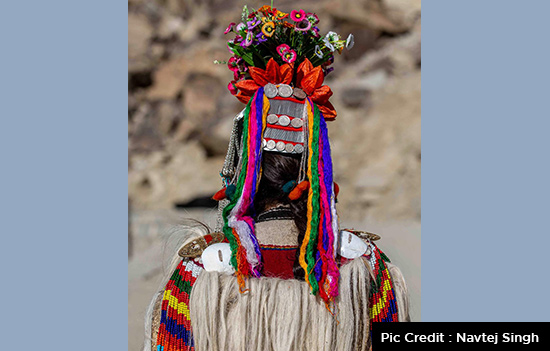
Older community members wear pearly
button ear decorations, and women style their hair into intricate
multi-stranded braids. Each
element of their headdress serves a medicinal purpose, such as the seven-colored ribbon believed to ward off
sun-related ailments, silver brooches offering protection against planetary
influences, and peacock feathers with specific medicinal properties.
Dress
The traditional dress of the Brokpa community is a blend of historical influences, resembling the clothing styles of the Kalash people in Chitral i.e. is a part of modern-day Pakistan. The attire is tailored to enhance their unique physical features, including a robust stature, tall frame, fair complexion, and Indo-Aryan attributes. The clothing serves as a symbolic representation of their heritage, emphasizing the community’s commitment to preserving its cultural roots.
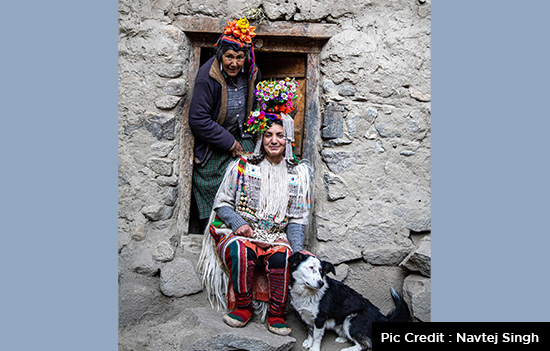
The jewellery, headgear, and dress of the Brokpa Community in Ladakh are not merely decorative but carry deep cultural significance. These elements play a crucial role in expressing and preserving the community’s ancient traditions, reflecting a tangible link to their rich and enduring cultural heritage.
My exploration of the Brokpa Community
in Garkone, Ladakh, proved to be a captivating journey, focused on their distinctive floral
headdresses that symbolize their cultural identity.
The Brokpa community's remarkable dedication to preserving a 5000-year-old cultural heritage is evident in their unique attire, which shares striking similarities with the customs and styles of the Kalash people in Chitral, Pakistan. This underscores enduring cultural ties between these distinct communities.
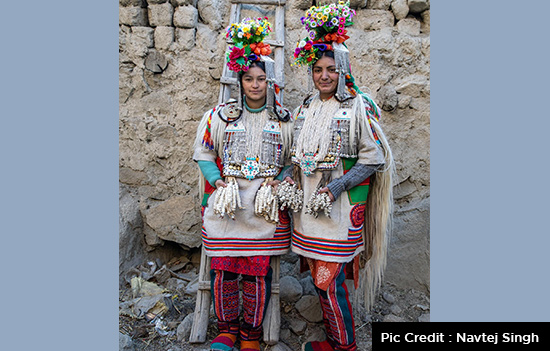
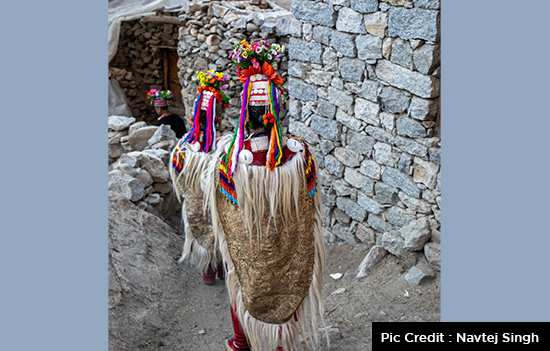
A notable feature of Brokpa attire is the elaborate floral headdress, not reserved for special occasions but an integral part of daily life, even during strenuous agricultural tasks. Adorned with rows of coins dating back to 1890 and vibrant ribbons, these eye-catching headpieces are embraced by both women and men, creating a visually captivating ensemble that enhances the Brokpa people's unique appearance.
Brokpa men and women display distinct
physical features, including a robust stature, tall frame, fair complexion, and
Indo-Aryan attributes like high cheekbones and deep almond-shaped blue-green
eyes. Their attire further enhances their striking presence, featuring elements
such as shells, coins, threads, animal fur, and heirloom silver jewelry. These
ornaments hold profound sentimental value, passed down through generations, and
are not available for purchase outside the Brokpa community.
Navtej
Singh is a Defence Photographer, Photographer, Traveller and Storyteller.
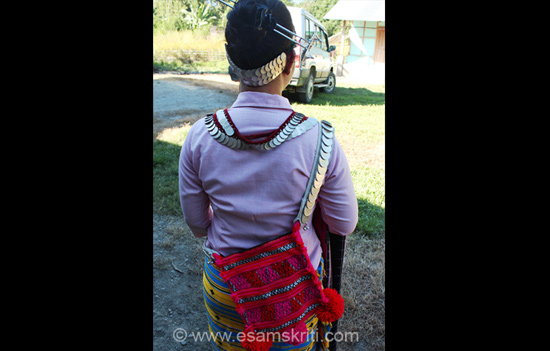 Tribe of Tezu Arunachal Pradesh, when in traditional dress wore coins.
Tribe of Tezu Arunachal Pradesh, when in traditional dress wore coins.
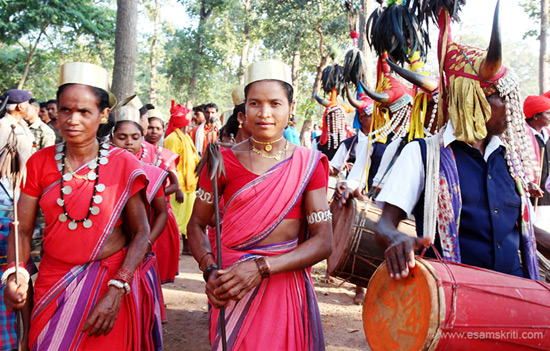 Tribal lady of Bastar, too has coins though not as many.
Tribal lady of Bastar, too has coins though not as many.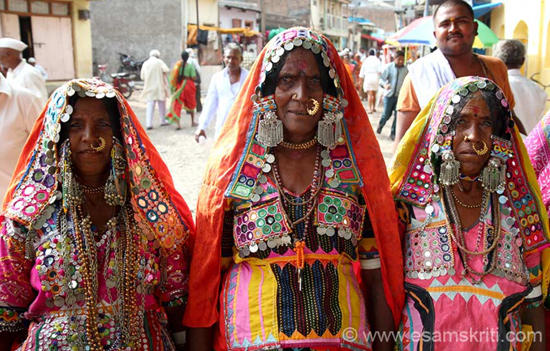 Banjara tribe from Karnataka wear coins and jewellery too. At Pandharpur in Maharashtra.
Banjara tribe from Karnataka wear coins and jewellery too. At Pandharpur in Maharashtra.
To see over 30 albums on Incredible Ladakh including Ladakh Festival